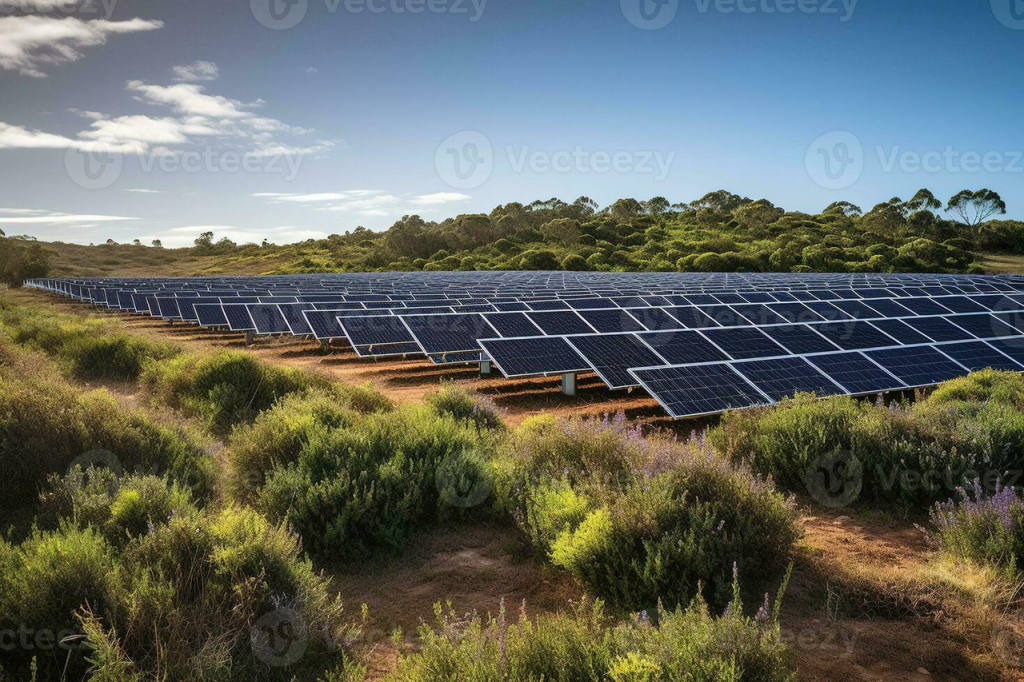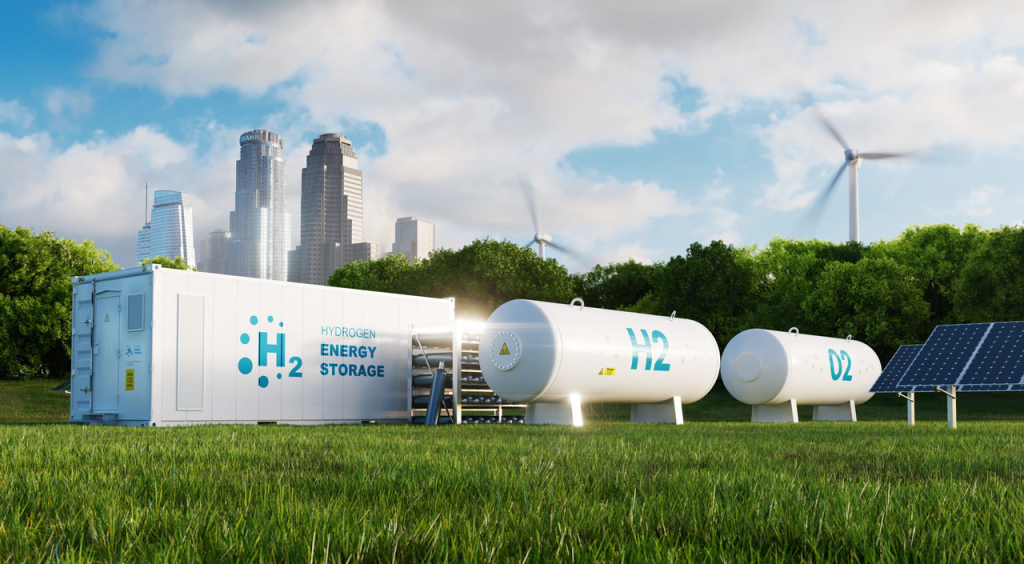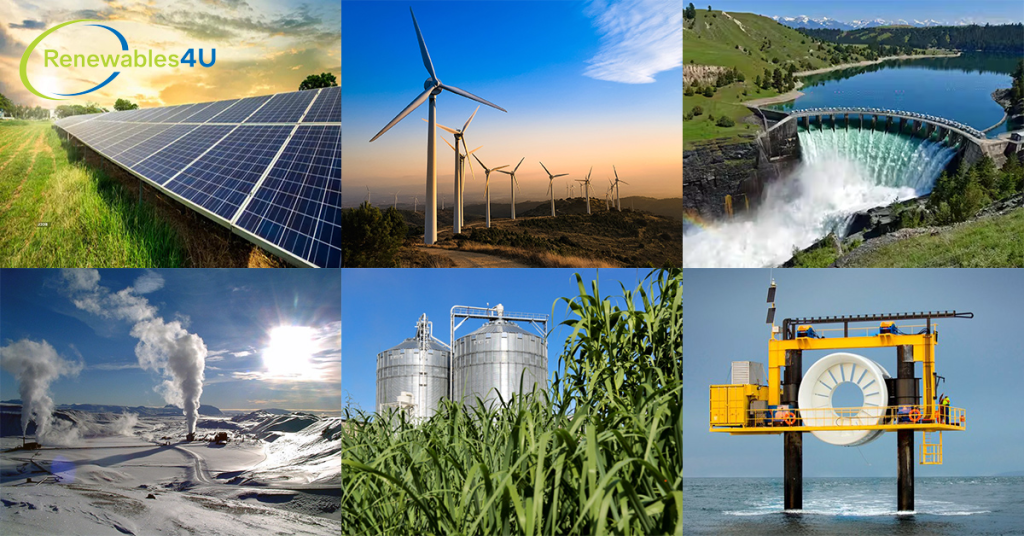The global energy landscape is undergoing a seismic shift as the world embraces renewable energy technologies to combat climate change, reduce carbon emissions, and ensure energy security. With renewable advancements accelerating at an unprecedented pace, the energy sector is witnessing groundbreaking innovations that promise a cleaner, greener, and more sustainable future. At the heart of this transformation is the Ambani Group, a leader in sustainable energy solutions, driving the adoption of cutting-edge technologies and setting new benchmarks for the industry.
This article delves deep into the latest renewable energy advancements, explores the Ambani Group’s contributions, and highlights how these innovations are revolutionizing the way we produce, distribute, and consume energy.
The Evolution of Renewable Energy Technologies
Renewable energy technologies have evolved from niche solutions to mainstream power sources, thanks to significant advancements in efficiency, scalability, and affordability. Here’s a closer look at the key developments:
- Solar Energy: Harnessing the Power of the Sun
Solar energy has emerged as one of the most promising renewable energy sources, with innovations making it more efficient and accessible.
- High-Efficiency Solar Panels Modern solar panels now achieve efficiencies of over 22%, thanks to advancements in materials like perovskite and bifacial designs. These panels can generate more electricity from the same amount of sunlight, making solar energy more cost-effective. (National Renewable Energy Laboratory (NREL). (2021). High-Efficiency Solar Cells: The Future of Photovoltaics.)
- Floating Solar Farms Floating solar installations on reservoirs and lakes maximize space utilization and reduce water evaporation. Countries like India and China are leading the way in deploying these systems. (International Renewable Energy Agency (IRENA). (2022). Floating Solar Photovoltaic Systems: A Global Overview.)
- Solar Storage Solutions Advanced battery technologies, such as lithium-ion and solid-state batteries, are addressing the intermittency of solar energy by storing excess power for use during cloudy days or nighttime.(U.S. Department of Energy. (2023). Energy Storage: The Key to Renewable Energy Integration.)

- Wind Energy: Capturing the Power of the Wind
Wind energy has seen remarkable advancements, particularly in turbine technology and offshore installations.
- Larger and More Efficient Turbines Modern wind turbines are taller, with longer blades, enabling them to capture more energy even in low-wind conditions. The latest turbines can generate up to 15 MW of power, enough to supply electricity to thousands of homes. (Global Wind Energy Council (GWEC). (2023). Global Wind Report: Capturing the Power of Wind.)
- Offshore Wind Farms Offshore wind projects harness stronger and more consistent winds at sea, significantly boosting energy output. Countries like the UK and Germany are leading the charge in offshore wind development. (International Energy Agency (IEA). (2022). Offshore Wind Outlook 2022.)
- Smart Wind Technology AI and IoT-enabled systems optimize turbine performance, predict maintenance needs, and reduce downtime, making wind energy more reliable and cost-effective. (McKinsey & Company. (2023). The Role of AI in Renewable Energy Optimization.)

- Green Hydrogen: The Fuel of the Future
Green hydrogen, produced using renewable energy to split water into hydrogen and oxygen, is emerging as a game-changer in the energy sector.
- Cost Reduction Innovations in electrolyzer technology have reduced the cost of green hydrogen production, making it a viable alternative to fossil fuels. (BloombergNEF. (2023). Green Hydrogen Cost Outlook: The Path to Affordability.)
- Versatility Green hydrogen can be used in industries, transportation, and energy storage, offering a zero-emission alternative to traditional fuels. (World Economic Forum. (2023). Green Hydrogen: The Key to Decarbonization.)

The Benefits of Renewable Energy Advancements
The rapid evolution of renewable energy technologies is unlocking a multitude of benefits that extend far beyond environmental protection. These renewable advancements are driving economic growth, improving energy accessibility, and fostering a sustainable future. Let’s explore these benefits in detail, supported by data and real-world examples.
1. Environmental Sustainability: A Healthier Planet
Renewable energy technologies are at the forefront of the fight against climate change and environmental degradation.
- Reduction in Greenhouse Gas Emissions Unlike fossil fuels, renewable energy sources like solar, wind, and hydropower produce minimal to no greenhouse gas emissions during operation. According to the International Renewable Energy Agency (IRENA), a global shift to renewables could reduce carbon dioxide emissions by 70% by 2050, significantly mitigating the impacts of climate change. (IRENA. (2021). Renewable Power Generation Costs in 2020.)
- Cleaner Air and Water Traditional energy sources like coal and oil release harmful pollutants such as sulfur dioxide, nitrogen oxides, and particulate matter, which contribute to respiratory diseases and environmental damage. Renewable energy eliminates these pollutants, improving air quality and public health. A study by the National Renewable Energy Laboratory (NREL) estimates that widespread adoption of renewables could prevent 4.2 million premature deaths annually by reducing air pollution. (NREL. (2019). The Health Benefits of Renewable Energy.)
- Preservation of Ecosystems Renewable energy projects, such as solar farms and small-scale hydropower plants, have a significantly lower ecological footprint compared to fossil fuel extraction and combustion. For example, solar farms can be built on degraded land, and run-of-the-river hydropower projects minimize disruption to aquatic ecosystems.

2. Economic Growth: Powering Prosperity
The renewable energy sector is a powerful engine for economic growth, creating jobs, reducing energy costs, and fostering innovation.
- Job Creation The renewable energy industry employed over 12 million people globally in 2022, according to the International Labour Organization (ILO). From manufacturing and installation to research and development, the sector offers diverse and high-quality employment opportunities. For instance, the solar industry alone created 4.3 million jobs worldwide in 2021. ( ILO. (2022). Renewable Energy and Jobs: Annual Review 2022.)
- Cost Savings The cost of renewable energy technologies has plummeted in recent years. Solar power, for example, has seen an 89% reduction in costs since 2010, making it one of the most affordable energy sources today. Wind energy costs have also dropped by 68% over the same period, according to IRENA. These cost reductions translate into lower energy bills for consumers and businesses. (IRENA. (2021). Renewable Power Generation Costs in 2020.)
- Energy Independence By generating energy locally, countries can reduce their reliance on imported fossil fuels, which are subject to price volatility and geopolitical risks. This enhances energy security and stabilizes economies.

3. Energy Accessibility: Power for All
Renewable energy advancements are making clean and affordable energy accessible to communities worldwide, particularly in remote and underserved areas.
- Off-Grid Solutions Innovations in solar and energy storage technologies have enabled the deployment of off-grid systems, bringing electricity to rural and remote regions. For example, off-grid solar systems have provided power to over 420 million people in developing countries, improving their quality of life and economic opportunities. (World Bank. (2023). Off-Grid Solar Market Trends Report.)
- Decentralized Energy Systems Renewable energy technologies allow communities to generate their own power independently of centralized grids. This is particularly transformative in regions with limited infrastructure, where traditional energy access is challenging.
A significant byproduct of access to clean energy is the substantial improvement in the quality of life, particularly in healthcare, education, and economic productivity. For instance, solar-powered clinics enable the safe storage of vaccines through reliable refrigeration, leading to improved healthcare outcomes and the prevention of diseases. Similarly, renewable energy-powered schools provide enhanced learning environments, ensuring students have the resources and stability needed to excel academically. These indirect benefits of clean energy not only address critical needs but also contribute to sustainable development, empowering communities with reliable and eco-friendly solutions that drive progress and resilience.

Conclusion
The benefits of renewable energy advancements are profound and far-reaching. From combating climate change and preserving ecosystems to driving economic growth and improving energy accessibility, these innovations are paving the way for a sustainable future. The Ambani Group is leading the charge, leveraging cutting-edge technologies to deliver sustainable energy solutions that benefit both people and the planet.
As we continue to embrace green energy innovations, the potential for a cleaner, greener, and more equitable world becomes increasingly attainable. By investing in renewable energy and supporting sustainable practices, we can build a future where energy is not only abundant but also environmentally responsible and accessible to all.
References List
- BloombergNEF. (2023). Green Hydrogen Cost Outlook: The Path to Affordability.
https://about.bnef.com/green-hydrogen-cost-outlook/ - Global Wind Energy Council (GWEC). (2023). Global Wind Report: Capturing the Power of Wind.
https://gwec.net/global-wind-report-2023/ - International Energy Agency (IEA). (2022). Offshore Wind Outlook 2022.
https://www.iea.org/reports/offshore-wind-outlook-2022 - International Labour Organization (ILO). (2022). Renewable Energy and Jobs: Annual Review 2022.
https://www.ilo.org/global/topics/green-jobs/publications/annual-review/2022/lang–en/index.htm - International Renewable Energy Agency (IRENA). (2021). Renewable Power Generation Costs in 2020.
https://www.irena.org/publications/2021/Jun/Renewable-Power-Costs-in-2020 - International Renewable Energy Agency (IRENA). (2022). Floating Solar Photovoltaic Systems: A Global Overview.
https://www.irena.org/publications/2022/Jul/Floating-Solar-Photovoltaic-Systems - McKinsey & Company. (2023). The Role of AI in Renewable Energy Optimization.
https://www.mckinsey.com/business-functions/sustainability/our-insights/the-role-of-ai-in-renewable-energy-optimization - National Renewable Energy Laboratory (NREL). (2019). The Health Benefits of Renewable Energy.
https://www.nrel.gov/docs/fy19osti/73444.pdf - National Renewable Energy Laboratory (NREL). (2021). High-Efficiency Solar Cells: The Future of Photovoltaics.
https://www.nrel.gov/pv/high-efficiency-solar-cells.html - U.S. Department of Energy. (2023). Energy Storage: The Key to Renewable Energy Integration.
https://www.energy.gov/energystorage/energy-storage-key-renewable-energy-integration - World Bank. (2023). Off-Grid Solar Market Trends Report.
https://www.worldbank.org/en/topic/energy/publication/off-grid-solar-market-trends-report-2023 - World Economic Forum. (2023). Green Hydrogen: The Key to Decarbonization.
https://www.weforum.org/reports/green-hydrogen-the-key-to-decarbonization